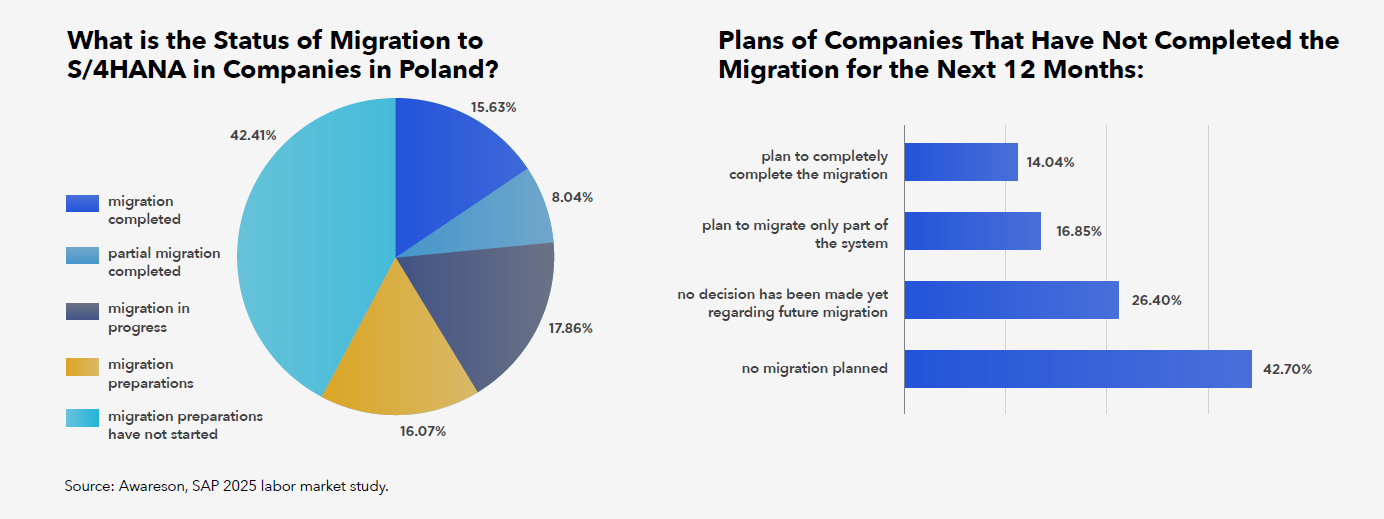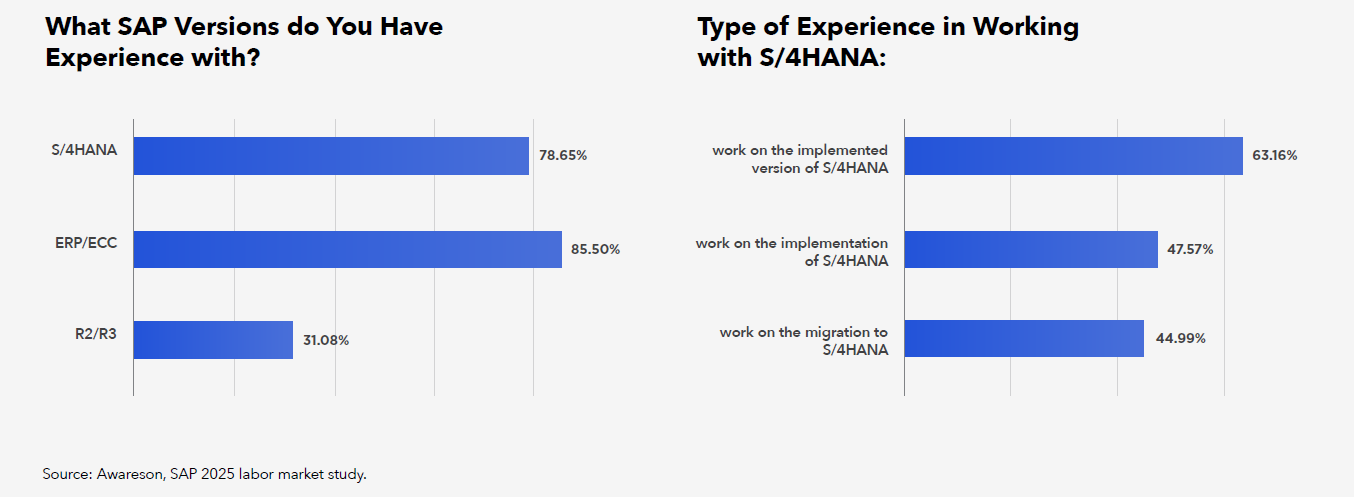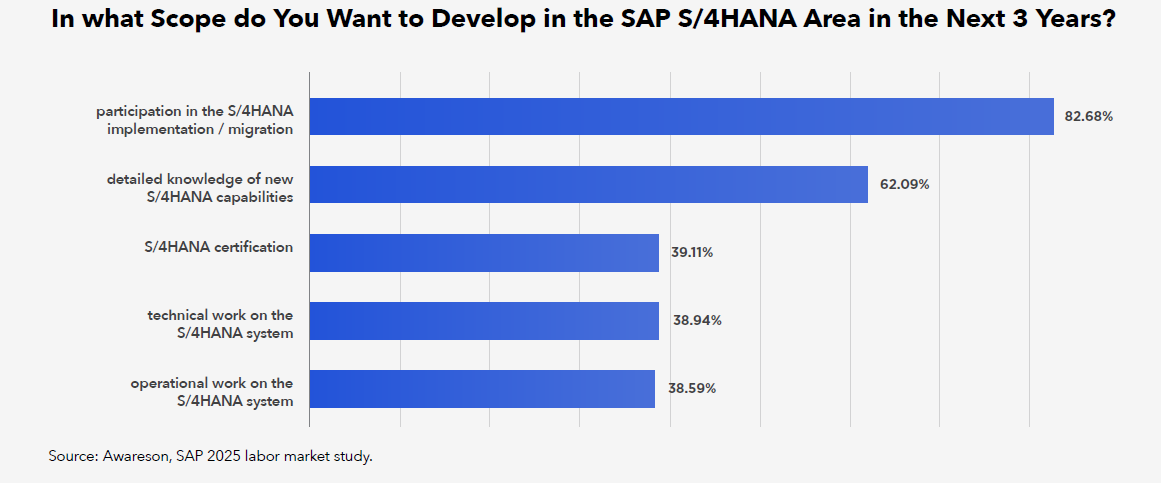S/4HANA implementation – how to build a team that will deliver the project

Migration to SAP S/4HANA is not only a technological challenge. It is primarily an organizational undertaking that requires good preparation of people. According to Gartner, as many as 70% of ERP implementations end in failure – and one of the main reasons is an unprepared or poorly constructed team.
In Poland, the situation is exceptionally demanding. Only 16% of companies have completed the implementation of S/4HANA, another 18% are in the process, and over half of the market has not even started. Time is running out – support for previous versions ends in 2027. In this article, we will show you how to build a team that will really increase the chances of success.

________________________________________
1. Internal team – the biggest risk and the biggest opportunity
Even if you use an implementation company – it is your team that decides whether the project will be successful. 90% of companies are supported by partners, but it is the mismatch and overload of the internal team that turns out to be the most common cause of problems.
– Companies often do not realize how multidimensional a project the transformation to S/4HANA is. It is not an upgrade – it is a change in the way the organization operates, which affects processes, data, people and work culture. If the team is not prepared, there is no way to effectively cooperate with the implementation partner – says Michał Wierzbowski – a SAP architect with many years of experience, currently working on one of the largest global implementations.

Why do you need to strengthen the team? Because it will be burdened twice – with maintaining the old system and participating in the new project. Meanwhile:
• only 40% of SAP specialists in Poland worked on the implementation of S/4HANA (often in supporting roles),
• 70% know the new system only superficially,
• the turnover of SAP specialists is only 12–14% per year, which makes it difficult to recruit new people.
The internal team also includes business users – they also need to be involved from the beginning.
________________________________________
2. Pre-Discovery – the best time for smart decisions
The pre-Discovery phase is not only about process analysis. This is the moment when the IT team and business start to understand what they will really need. In practice, this is the only stage where you still have time to calmly:
• identify competency gaps,
• plan recruitment,
• set a realistic schedule.
In large organizations, pre-discovery lasts 6–12 months, and its absence often results in a delay of the entire implementation.
________________________________________
3. An architect on your side – an essential CIO partner
You cannot count on the implementation company to take on all the responsibility. Even the best partner does not know your organization – its structure, limitations or real expectations. You need an architect on your side, who will connect the worlds of business, IT and the implementation partner.
– An architect on the client’s side is not just a technician – he is a person who understands the business context and is able to question the partner’s proposal when it does not serve the organization. It is also decision-making support for the CIO – someone who says: let’s go in this direction, but let’s understand the consequences. Without such an internal voice, it is easy to fall into a passive acceptance mode of everything proposed by the external team – suggests Piotr Aftewicz, former CIO, now an advisor to large companies in the field of building SAP teams.
It is worth having such an architect participate in pre-discovery and accompany the project throughout the implementation life cycle – from partner selection, through testing, to hypercare.
________________________________________
4. Implementation partner – what influence do you have on their team?
You will not choose specific names, but you can influence the quality of the partner’s team. What is worth agreeing on already at the tender or contract stage:
• experience in your industry,
• ability to work in complex organizations (e.g. geographically dispersed),
• knowledge of local requirements (e.g. tax).
In practice, companies are increasingly filling the gap by:
• hiring temporary experts (e.g. for local rollouts),
• engaging external advisors only for mentoring and knowledge transfer.
________________________________________
5. After implementation – or how to maintain competences
S/4HANA is not just a different interface. This is a different process logic, a different data architecture and a different approach to work. Your team – both IT and business – must learn this after the system is launched.
Without a competency development plan:
• users will start to “work around” new solutions,
• the IT team will be overloaded with support,
• the real potential of the system will not be used.
Therefore, plan today:
• a series of trainings after go-live,
• access to consultants on a “shadowing” basis,
• a review of the actual use of functions and adaptive KPIs.

________________________________________
Summary
Transformation to S/4HANA is one of the most important projects in recent years – but also one of the most difficult. In Poland, only 1 in 6 companies have implemented it, and most are just planning it. You still have time – but it is running out. The project will succeed if you start with the team.
CIO: 5 actions you can implement today
1. Conduct reliable pre-discovery.
2. Assess the team capacity and plan its reinforcement.
3. Find an architect on your side.
4. Influence the composition of the implementation partner’s team.
5. Ensure the development of competences after implementation.
Want to know more? Contact us and take advantage of a free consultation: contact@awareson.com



